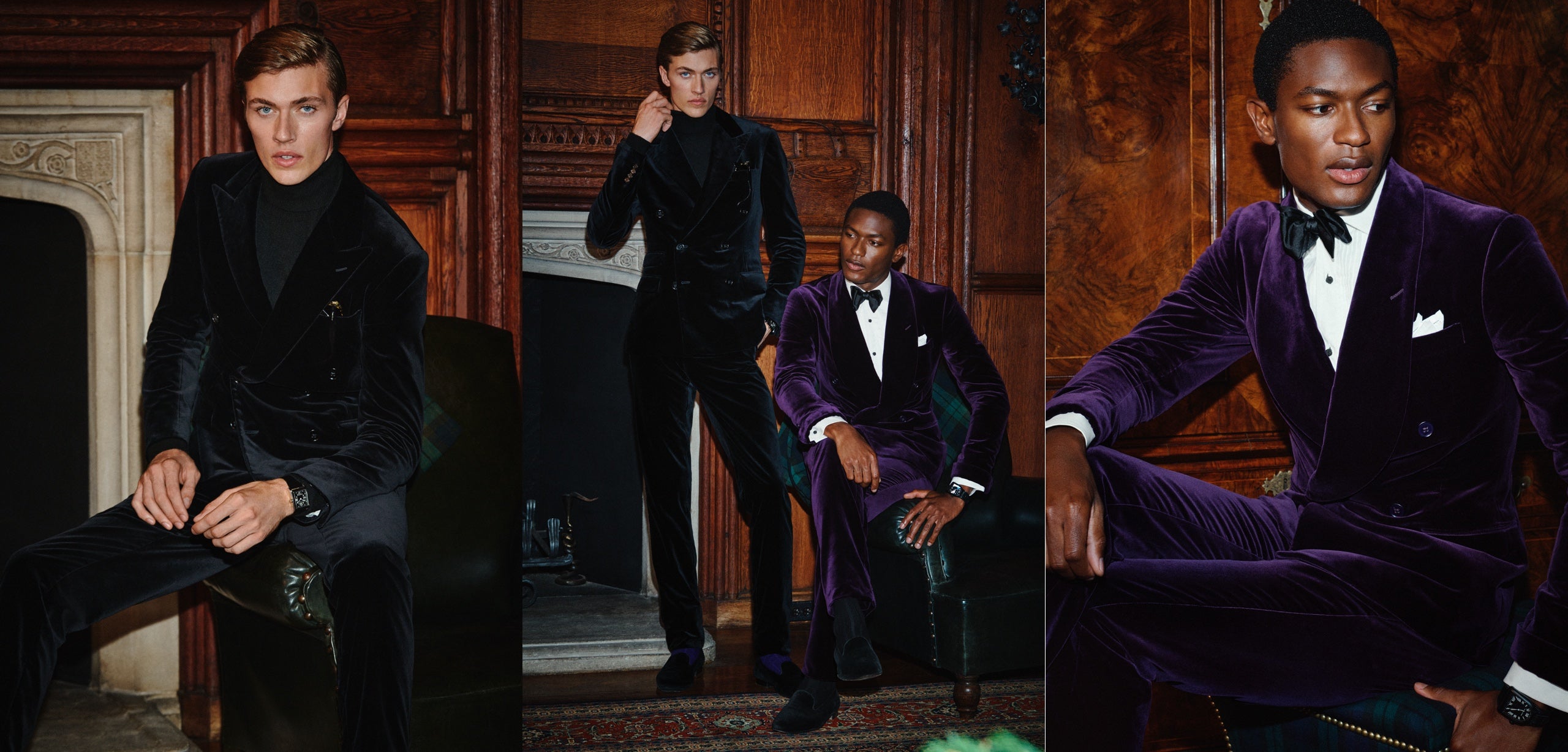
Smooth Moves
This season, velvet offers an alluring—and surprisingly versatile—take on eveningwear“In a tuxedo, I’m a star,” Dean Martin once said. “In regular clothes, I’m a nobody.”
While few would consider Martin to be a nobody regardless of his outfit, and with all due respect to the rest of the wide-ranging world of menswear, he’s right: Formalwear is unlike any other kind of clothing. It’s instantly elevating. Slide on your jacket and straighten your bow tie, and you’ll feel like a new man. Or, at least, a far more suave version of the same man.
And though traditional wool and satin make for a can’t-miss classic, there’s one fabric that takes the already-elevated feeling of formalwear to new heights: velvet. Across a pair of formal slippers, or as a collar accent on a Chesterfield, the fabric is subtle and alluring. As a full tuxedo, it’s unmistakable—rich, soft, and daring.
And so, though the question, “Does anyone ever really need a purple velvet dinner jacket?” will warrant an “admittedly not” for most of us, that didn’t stop my collection from growing. It started with a late-fall trip to Ralph Lauren’s famed mansion at 867 Madison Ave in New York City. While browsing the racks of elegant double-breasted pinstripes, something caught my eye: a velvet number in a sumptuous shade of violet, cut into a peak-lapel single-button dinner jacket.
From there I moved on to deep chocolate browns, midnight navy trousers, and a silvery grey two-button notch blazer. And while in theory these pieces might be the least practical ones in my wardrobe, they have proven to be more versatile than originally expected. Undoubtedly, they’re also the most fun to wear.

Velvet trousers with a dark cashmere sweater work brilliantly for a polished dinner party or late-evening cocktails. A velvet sport coat can take the place of nearly any other when worn with enough confidence, and works surprisingly well with a denim shirt to create a contrast of fabrics and formalities. At a holiday celebration, it will surprise and impress. And at a black-tie affair, it will set you apart from the sea of men in their staid black baratheas.

Perhaps that’s why Ralph Lauren has long utilized the cloth for both daytime and eveningwear in Purple Label collections. For decades, he’s used it in dark, rich colors for eveningwear, and alluring jewel tones or earthy ones for daytime, often paired with either tweed or flannel for a unique contrast. In either case, the lush texture and saturated tones brilliantly play up the contrast of a soft fabric against the sharp structure of English-inspired tailoring.

Unlike most Purple Label fabrics, which are painstakingly custom-woven to achieve that perfect Ralph Lauren texture and finish, velvet requires very little intervention aside from custom coloring to achieve the hues of the season. It’s produced, according to Ralph’s directions, by the storied velvet mill Pontoglio (just a stone’s throw from Lake Como and Milan), where weavers have been making the world’s absolute best velvet for nearly 140 years.
Over the years, Ralph’s unique velvets have ranged from washed to printed to “bruised” (where the cloth takes on an uneven, seemingly three-dimensional dented surface). He’s done solid colors aplenty, plus tartans, plaids, and paisleys. And while Purple Label’s daytime velvet might draw the eye, it’s the formal tuxedo where the fabric shines most brightly. A classic black or cream dinner jacket may make you feel like James Bond, but a velvet dinner jacket makes you feel like royalty.
Is it a novelty? Certainly. Do my velvet jackets often see the light of day outside of my closet? No, not really.
But for me, the soft shine of the cloth and the transformative feeling it imparts have no sartorial rivals. Any time I can manage even the slightest excuse to wear one—holiday parties are a sure bet, but you can often find (or make) other occasions throughout the season—out comes the beloved velvet.
- © Ralph Lauren Corporation






